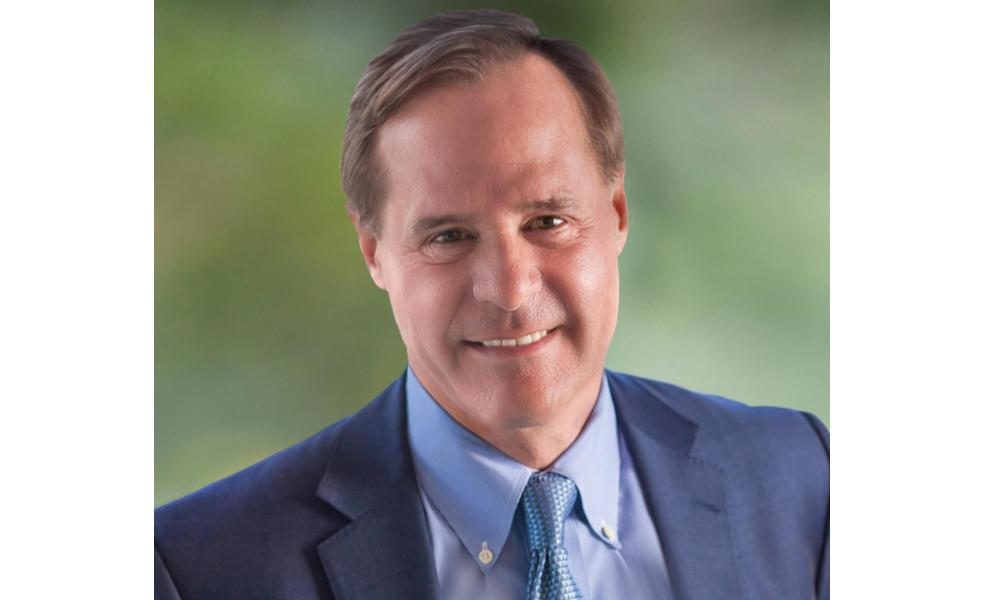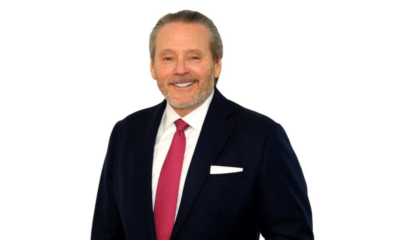Acquisitions
Inside the Boardroom: Tommy Craig
By
Joseph Richter

Tommy Craig, Senior Managing Director at Hines, joined us to discuss his background and how the company has evolved over the years. We delved into what Amazon’s pullback means for the industrial market and why he’s so excited about 555 Greenwich.
Daily Beat: Can you please share with our readership your background and how long you’ve been at Hines?
Tommy Craig: I joined Hines in 1982 directly out of Columbia. At the time, we were a small firm and sole proprietorship. It was called Gerald D. Hines Interest.
We really focused on iconic urban office buildings. Gerry Hines got a well earned reputation as introducing high-end architecture to corporate America. If you fast forward 40 years, our firm now has grown from 300 people to 5,000 people
I’ve led the New York office since 1996 and I’m currently co-running it with my colleague Jason Alderman. I also now lead our Boston office, which has led to both expanded and contracted responsibility.
Daily Beat: What does the AUM look like today?
Tommy Craig: We have $80 billion of assets under management as a fiduciary and another $80 billion for third party work. Hines is active across all geographies around the world and all sectors, including office, various forms of living, and industrial.
In fact, if you look at our investment committee where they’re allocating money, our primary sources of growth have been more in the living and the industrial sectors than office. This comes as no surprise given COVID.
We are as active these days as an investment manager as we are a developer. My generation at Hines would say that our secret sauce is that we’re a vertically integrated real estate company. We’re not a financial institution that allocates money to operators nor are we an operator focused on a single sector like Prologis would be.
Daily Beat: I gather that fundraising numbers have been very strong recently.
Tommy Craig: Yes. It’s unusual when you combine our access to capital and our development expertise. We’re raising about three times the amount of capital today than we were before COVID.
Capital can be deployed across every sector in every geography and we’ve been successful in finding alpha return and beta to manage risk. It took 65 years to get a business model scaled to a global footprint and it’s exciting to be a part of it.
The basic business model of the firm is very different than I believe any of our peers. Hines is private, but what makes the compay unusual is that 50% of every Hines project is owned by employee partners. We own our work in capital accounts and are therefore fully aligned with the Hines family. This helps foster a culture of managing risk and pursuing opportunity.
The firm allows its local partners to have a lot of autonomy because Gerry Hines understood that real estate is fundamentally a local business. Our service platform and obviously the global capital we raise is shared.
Daily Beat: And I gather that this helped with the recent NPS deals with SL Green?
Tommy Craig: Yes. Hines’ relationship with NPS led them into One Vanderbilt and One Madison. We also have a fund with NPS called the Atlas Fund.
In a place like New York, being a global firm with access to global capital for vertical devel- opment, it gives us a really competitive advantage. Some of that capital wants to be in New York, but they want somebody who is a like minded thinker and thinks more in global terms rather than purely local terms.
Daily Beat: So it sounds like you can essentially be asset agnostic?
Tommy Craig: Yes. Our CIO David Steinbach likes to say that we have now arrived at the point where we can be agnostic as to use-type. It’s our job to find the highest and best use in any given real estate equation.
Daily Beat: Amazon said that they’re halting new leases and expansions in terms of acquisitions and leasing. A CBRE report recently found that rents for large warehouses rose 16% last year as vacancy rates plunged. What happens when the biggest player pulls back?
Tommy Craig: I think because they’re the biggest player they are setting marginal prices. I’m not going to claim to be an industrial expert, but we’re actually starting our first logistics project in Northeast Pennsylvania’s Hazleton. All that’s happening now is that Amazon announced they have enough space capacity for others.
I’ve seen four major cycle changes in my life – 1991, 2001, 2008, 2020. Often what happens is that projects that have been planned that are marginal are either canceled or postponed. Product that is dated are often abandoned for better properties. Fortunately, we don’t have any old industrial buildings. Investors have been underwriting a uniformly rosy picture and it’s not uncommon for the capital markets to get out in front of the fundamentals, so there will probably be a natural rebalancing.
Daily Beat: They were leasing a staggering amount of space.
Tommy Craig: It’s actually a good thing when something like this happens. It helps take the speculative fever out of the market and allows a more natural equilibrium and I suspect that’s what’s been happening since they released their earnings report.
Daily Beat: There are many speculative, industrial developments out there.
Tommy Craig: This favors a firm like Hines that has the capital capacity. It’s not like our margin of safety for our project is a dollar or a day. When this happens, it’s the guys that don’t have the strength that falter. The thing you learn in real estate over decades is you need timing, location, and long term hold structures to carry you through this kind of volatility.
We have some really favorable capital. Hines has been very careful. We’re not highly leveraged and don’t always rely on a lot of debt.
There are a lot of guys out there that have been playing the debt markets to their favor the last couple years, but we don’t partake in that.
Daily Beat: That puts you in a strong position now.
Tommy Craig: Yes. Our New York office does not have a single loan that’s maturing in the next two years. This is a time where there are other guys that have a major loan maturing and a lease expiring. That’s where the pressure is going to be. If you’re under capitalized, you will be subject to pricing squeezes.
Daily Beat: Hudson Square Properties officially topped out 555 Greenwich in April. Can you please describe the genesis of the project?
Tommy Craig: The paternity of 555 Greenwich is unusual and is probably the most innovative project we’ve ever done. I’ve been the principal on this project since we conceived of it in 2018. It’s the byproduct of a venture we formed in 2016 with Norges and Trinity. Hines was selected as the operating member of the partnership between those two entities.
After Hurricane Sandy, Trinity Church realized that they had 100% of their financial assets specific to one asset class in one neighborhood and were susceptible to flooding. Their legacy real estate goes back 300 years to a grant they got from Queen Anne.
They were very intentional about a strategy to diversify on behalf of the church as custodian of those funds and they brought in Norges after they submitted a non-conforming bid to acquire a 49% interest in an 11 building portfolio at a valuation of $3.5 billion.
Norges insisted that if they were going to come in with that much capital, the church was no longer going to operate its own real estate and retain a real estate company to do that. Hines was selected in 2016 to be that company.
We came into the partnership and put a very substantial amount of money to acquire a 1% interest. Today, this portfolio consists of 6 million SF, and is valued above $5 billion and will approach $6 billion when we finish this building.
Asides from the appraised value of the underlying real estate having gone up, we also acquired 375 Hudson for $650 million right across the street. It was always the intent of the partners to try to create a living organism through our work and not just limit ourselves to the 11 buildings.
Daily Beat: What else would you like to share about the project?
Tommy Craig: The building was designed with leading-edge clean energy technology and the most advanced building systems available to create a healthy environment for tenants and minimize the environmental impact.
Rick Cook of COOKFOX Architects did an amazing job. He was one of the founders of Terrapin Bright Green and his commitment to sustainable design goes way beyond this project.
Daily Beat: The setbacks in those images are very creative.
Tommy Craig: Yes. The façade will feature numerous setbacks with outdoor terraces and floor-to-ceiling windows. The building connects seamlessly to the adjacent 345 Hudson Street on nearly every floor, providing users with large floor plates and no obstructions.
The building will feature state-of-the-art mechanical, engineering and plumbing systems, including geothermal piles, and is the first new office building to utilize its concrete superstructure for thermal energy storage. All of this will create an expected 46% overall carbon reduction and a 29% reduction in electrical consumption.
We collaborated with global sustainability design experts. Jaros, Baum and Bolles is providing MEP services. Additionally, the project represents the first office building to utilize a thermally activated slab with a radiant activated system which reduces carbon emissions by 50% while eliminating any fossil fuels utilized for heating and cooling. It will also em- ploy a DOAS system to maximize the quantity and quality of fresh air to the workplace, which will be supplemented by geothermal wells and more than 10,000 square feet of outdoor space.
We’re very excited about the project and believe it’s well positioned to succeed in this unique office environment.
*The interview has been edited and condensed for clarity.





